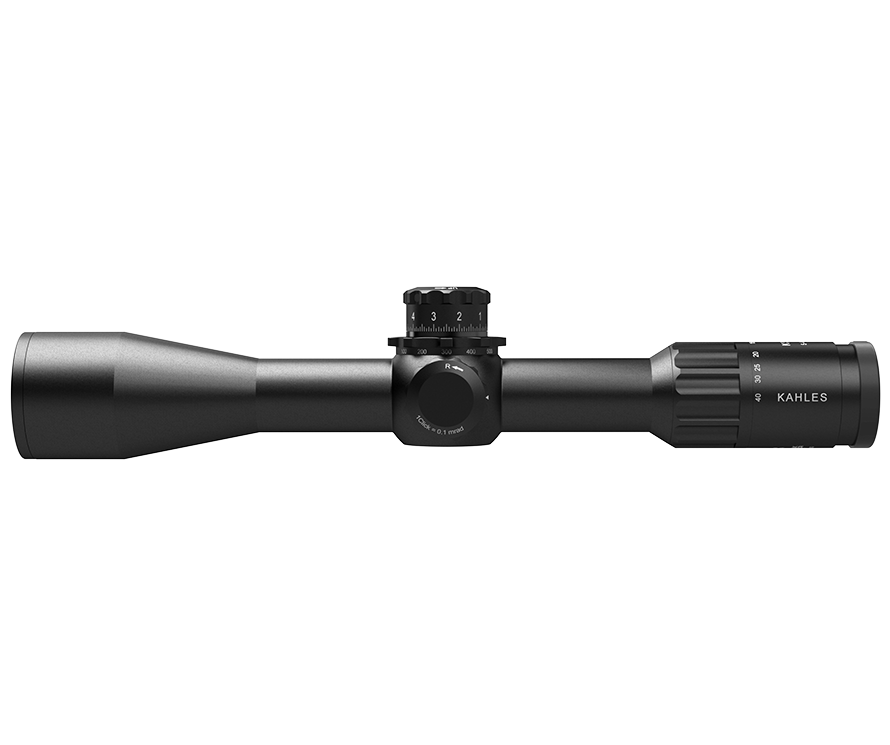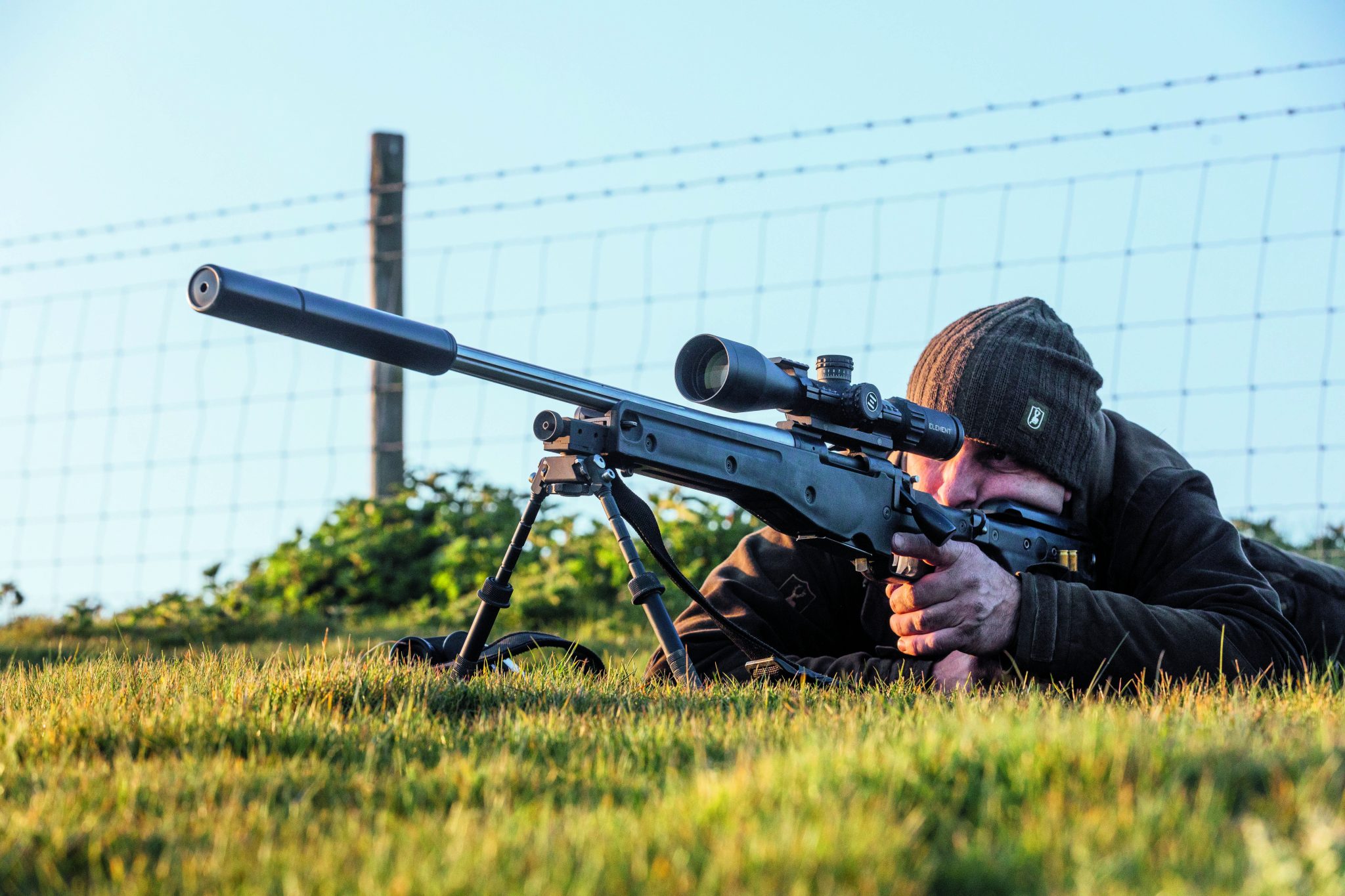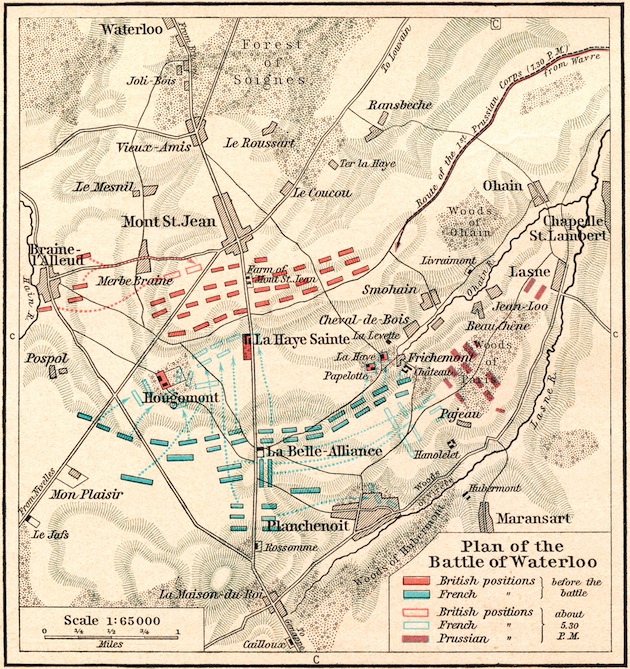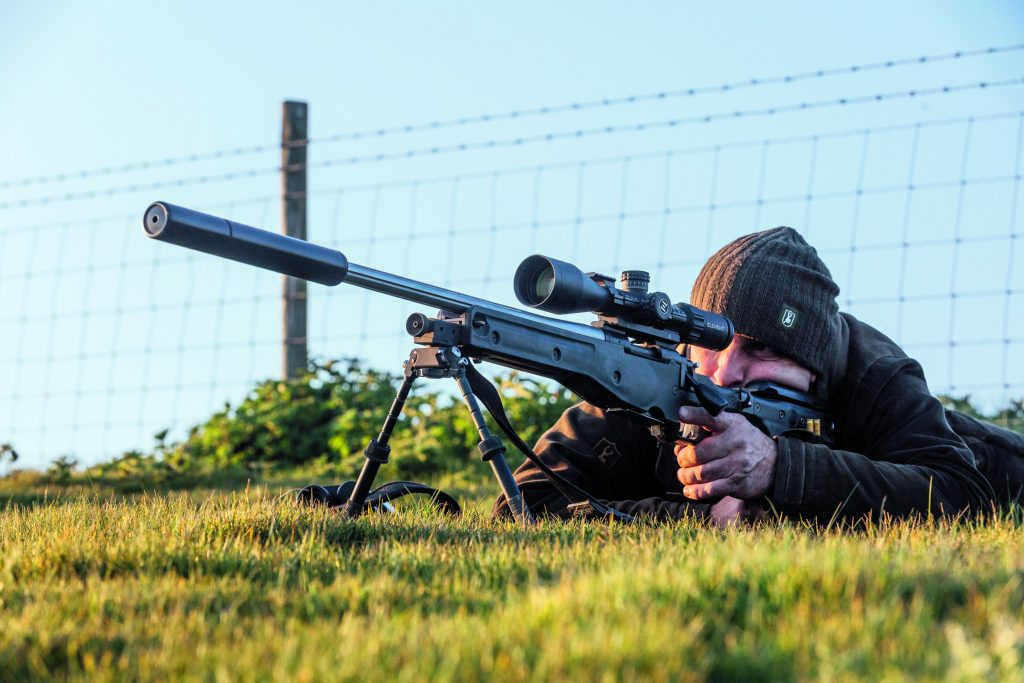Robert Cuthbert: Have you managed to get out much this season? Sir Barney White-Spunner: “I’ve had a couple of days…
News
The gun that defeated Napoleon
Would you like to speak to our readers? We offer sponsored articles and advertising to put you in front of our audience. Find out more.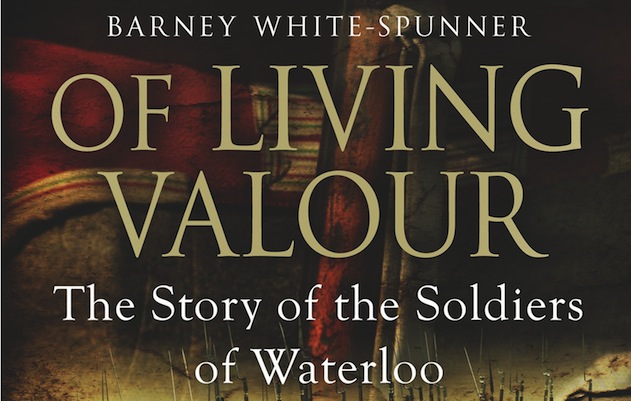
The Guards’ squares “presented a shocking sight”, wrote Captain Rees Gronow. “Inside, we were nearly suffocated by the smoke and smell from burnt cartridges. It was impossible to move a yard without treading on a wounded comrade, or upon the bodies of the dead; and the loud groans of the wounded and dying were most appalling. The square was a perfect hospital of dead, dying and mutilated soldiers.”
The Guardsmen whom Gronow commanded at the Battle of Waterloo — fought 200 years ago this week — were armed with the India Pattern Brown Bess musket, as were the majority of the British, German and Dutch infantry. The smoke and smell of burnt cartridges came from the repeated volleys they fired into the advancing French cavalry.
The India Pattern musket was so called because the government had bought quantities of them from the East India Company at the end of the 18th century. It was a fairly basic smoothbore weapon, which had been in service for about 80 years by the time of Waterloo. It fired a heavy round ball propelled by black- powder ignited by a flintlock.
It was not very accurate — even experienced infantrymen would only hit a target at 100 yards every three shots — but, used at closer ranges and in volleys, it was devastating. The lead musket ball weighed about an ounce and would flatten on impact, smashing bones and causing horrific injuries to tissue and muscle.
It was propelled by a five-dram cartridge, there being 16 drams to the ounce, so about twice as much powder as the normal load in a modern sporting gun. This gave it considerable penetrative power. A round fired recently from a Waterloo-era musket passed straight through a railway sleeper at 50 yards.
Loading was a complicated procedure
By modern standards it was slow to load, with a good battalion only being able to get off four shots a minute, something infantry tactics addressed by firing in alternate ranks. Loading was a complicated procedure, starting with biting the top off a paper cartridge that soldiers carried, made up and wrapped in greased paper in a leather pouch, while holding the ball in their mouth.
The cartridges were well made by 1815, proving reliable and fairly resistant to the weather. The hammer of the flintlock mechanism was then pulled halfway back, and a little of the powder was poured on to a priming pan, while the rest was poured down the barrel.
The ball, or “shot”, was then spat down the barrel and the paper cartridge case was rammed down on top to form a wad, using the ramrod that was stored under the barrel. This was an awkward process, which led to numerous cuts and bruises, though the bayonet was fitted at an angle away from the muzzle so that it didn’t get in the way.
However, this meant that the bayonet was less robust and more likely to bend in action; it was not until the advent of the percussion cap that the British Army enjoyed the luxury of straight bayonets.
Once loaded, the musket was brought to the horizontal and aimed using a small bead foresight, which was also the bayonet lug. Before firing, a line of infantry would take a quarter turn to the left, a deliberate move that signified the imminent discharge of a volley and which the French found most unnerving. The musket’s barrel was 39in, so about 9in longer than the average modern shotgun. Weighing in at approximately 10½lb, it needed considerable strength to hold steady and fire.
Muskets quickly became clogged up in an intensive action, with deposits of gunpowder accumulating in the barrel. When quick reloading was at a premium, as it was at Waterloo, soldiers didn’t bother with the ramrod, simply tapping the butt of the musket on the ground to shake the ball down the barrel. Consequently, the shot lost much of its effect and accuracy; the more carefully a weapon was loaded the more accurately it fired.
The priming pan also became clogged with old powder, as did the touch hole — which connected the priming pan to the powder in the barrel — and every infantryman carried a small wire brush and picker tied to his cross-belts so that he could clear them, though this required cool nerves in the thick of action.
The flint in the hammer, which struck the priming pan, also became less reliable after about 10 shots, and few would work for more than 30. Changing one in action was something to be avoided — the preferred remedy was to pick up a weapon from a dead or wounded colleague. The physical effects of repeated volley fire could also be severe. Tearing off the cartridges with their teeth made soldiers thirsty and their faces soon became blackened from the powder. The musket gave a heavy recoil, so that soldiers’ shoulders were as black as their trigger fingers. A common mistake in action was to put too many cartridges down the barrel, or too much powder on the priming pan, leading to flash-backs or exploding barrels.
Two shots a minute
Several regiments at Waterloo had the newer Baker Rifle. This looked similar to the musket and was also fired by a flintlock, but it had a shorter barrel, which was rifled with seven turns that gave the ball it fired greater range and accuracy. It was slower to load, so that even an experienced rifleman could only get off two shots a minute, but they could hit targets at 200 yards. This led them to concentrate their fire on the French officers and the young drummer boys who led the enemy’s infantry columns banging out the rousing notes of the Pas de Charge. It was not good for French morale to see them fall.
The musket and bayonet were the infantry’s main weapons. Officers carried swords, but would as often as not pick up a musket to fight. The cavalry carried pistols and carbines, which were efficient, having been redesigned following the Duke of York’s reforms in the 1790s.
It was almost impossible to fire an accurate shot off the back of a moving horse and the British infantry never ceased to taunt the odd French trooper who tried. The main cavalry weapon was the sword — no British soldiers carried lances at Waterloo, though the French did and found them very effective.
There were two main swords in use. The heavy cavalry carried a long-pointed sabre. This was not a favourite because the men thought the blade bent, it rattled in its scabbard and rusted easily. It was designed to deliver a thrust with the point but had the disadvantage in hand-to-hand fighting of being shorter than its French equivalent. Instead, the heavy regiments had to develop a slashing technique. At Waterloo they had sharpened the backs as well as the cutting edge of the blade so they could take a backward cut at French necks. They preferred the curved light cavalry sabre, which was well balanced and robust and actually designed to slash rather than point, but their counterparts in the light regiments guarded them jealously.
It is not easy to conceive just how small — and crowded — the Waterloo battlefield was. By the end of the day, when the Prussians arrived, there were nearly 200,000 men hacking, slashing, stabbing and firing at each other in a space not quite 1 mile by 2 miles. Many injuries were caused either by the solid shot or “case shot” — effectively a giant shotgun cartridge filled with balls — fired by the artillery or from savage fighting at close quarters with sword or bayonet.
Defeated Napoleon
But the disciplined volleys of musket fire delivered by well-drilled infantrymen standing in their rapidly diminishing squares or later advancing in line, was one of the key elements in the victory. We owe the old Brown Bess quite a debt and for all its complications and intricacies, it did the British Army proud.
But we owe rather more to those young men who fired it. Their average age was 22 and only a third had been in action before. Of the 68,000 who opposed Napoleon that day (not counting the Prussians, who arrived late), more than 23,000 were lost by the time the battle ended. Mostly they were labourers, weavers and ploughboys who had joined up in the months before the battle from a sense of patriotic duty.
Who were they? What did their families think? How were they trained in such a short time and how did they withstand the acute strain of combat? What happened to them afterwards? Those are the stories that have always fascinated me.
The men, their lives, their fears
Sir Barney White-Spunner’s book about these men, their lives, their thoughts and their fears, as well as about their training and weapons, is Of Living Valour: The Story of the Soldiers of Waterloo, published by Simon & Schuster. To order your copy at the special price of £20 (RRP £25), please contact the EFC bookshop, tel 01872 562327. Alternatively, send a cheque or postal order to EFC Bookshop, PO Box 200, Falmouth TR11 4WJ. UK delivery is free.
1
Related articles
News
A sound decision as moderators to be taken off licences
The Government has finally confirmed what the shooting community has long argued – that sound moderators should be removed from firearms licensing controls
By Time Well Spent
Gamekeeping news
News
Devastating effects of keepers downing tools
A 20-year experiment highlights the dramatic decline in our red-listed birds after predator control ends, proving the vital role of gamekeepers
By Time Well Spent
Manage Consent
To provide the best experiences, we use technologies like cookies to store and/or access device information. Consenting to these technologies will allow us to process data such as browsing behavior or unique IDs on this site. Not consenting or withdrawing consent, may adversely affect certain features and functions.
Functional Always active
The technical storage or access is strictly necessary for the legitimate purpose of enabling the use of a specific service explicitly requested by the subscriber or user, or for the sole purpose of carrying out the transmission of a communication over an electronic communications network.
Preferences
The technical storage or access is necessary for the legitimate purpose of storing preferences that are not requested by the subscriber or user.
Statistics
The technical storage or access that is used exclusively for statistical purposes.
The technical storage or access that is used exclusively for anonymous statistical purposes. Without a subpoena, voluntary compliance on the part of your Internet Service Provider, or additional records from a third party, information stored or retrieved for this purpose alone cannot usually be used to identify you.
Marketing
The technical storage or access is required to create user profiles to send advertising, or to track the user on a website or across several websites for similar marketing purposes.

